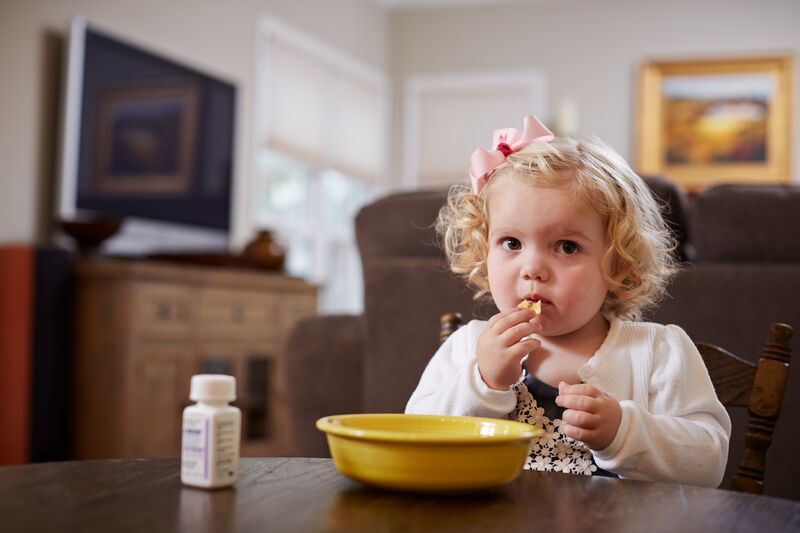Now that your child with cystic fibrosis has been eating cereals and pureed solid foods, it is important to continue to offer a wide range of new foods, flavors and textures (such as chewy, crunchy and soft). Be sure to serve solid foods in small pieces, and supervise your child to decrease the risk of choking.
Keep adding extra calories to your child's food. Your CF dietitian can help you plan how to add calories with cream, oil, butter, margarine or syrup.
As your child gets used to the way that high-calorie foods taste, you can slowly add more calories and start to use new ways to add them (e.g., ranch dressing). Try to add calories that match the color or feel of the food, or blend in well.
Here are some ways you can adapt typical snacks given to children without CF:
| Snack Foods for Children Without CF | High-Calorie Snack Foods for Children With CF |
| Dry cereal | Bite-sized muffins |
| Snack crackers | Full-fat cheese crumbles with high-calorie crackers |
| Bite-sized fresh fruit | Bite-sized canned fruit in heavy syrup or fresh fruit with high-calorie dip, whole milk yogurt or heavy cream |
| Snack puffs | Cheese puffs, soft cereal bars or high-calorie crackers |
| Low-fat yogurt | Full-fat yogurt, pudding or cottage cheese |
For tips on enzymes and feeding infants, watch the CF Enzymes and Nutrition video.
Set up the meal for success
At the start of mealtime:
- Remove toys, shut off the TV and get rid of other distractions. Your child may say that she is not hungry if a meal or snack will stop her from playing or watching TV.
- Have your child sit in her highchair for only 15 minutes for meals and 10 minutes for snacks. This can help avoid food battles. It teaches children who take a long time to eat to eat more quickly. Food should be removed at the end of the time limit.
- Schedule meals and snacks at about the same time every day. Establishing a daily routine will help your child be hungry when it is time to eat.
At this age, it is still OK to feed your baby, but also try to let the baby eat on his or her own at family meal and snack times.
Be Specific in Your Praise
Be your child's cheerleader when she eats well and follows the rules. Be very clear when saying what you like about your child's mealtime habits. Telling your child that she is a “good girl” does not tell her what action she did that you liked.
Try these praises:
- “Good job sitting in your chair!”
- “Nice job taking your enzymes!”
- “You tried a new food! Good job!”
- “You took a big bite. Mommy loves that!”
- “Yeah! You took one bite right after the other!”



